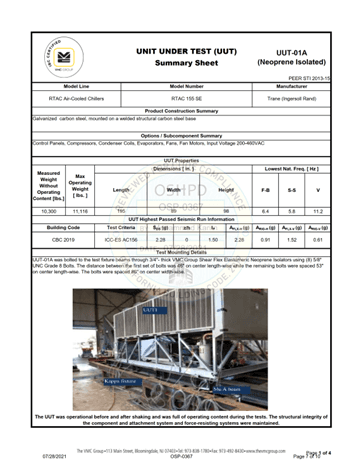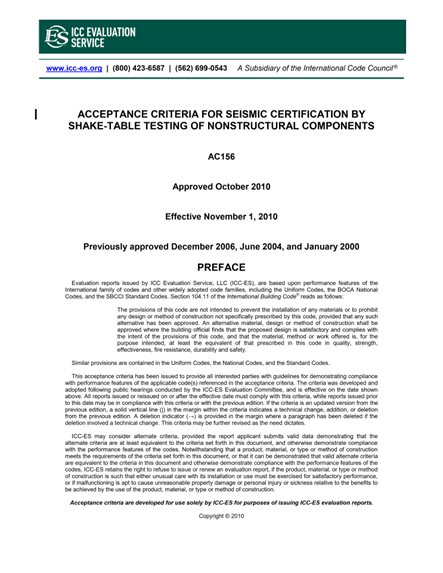Equipment seismic qualification
Equipment qualification
The seismic engineer’s responsibility is limited to the performance of the restraint. The equipment manufacturer remains responsible for the performance of the unit itself to ensure that it can withstand the specified seismic shaking without falling apart, and in some cases, without losing functionality.
The specifying engineer of record (Mechanical EOR, Electrical EOR, etc) needs to ensure that the selected equipment has the seismic qualification determined by manufacturer through testing, historical performance, or engineering design. The qualification is a lengthy and expensive process and is very difficult or impossible to obtain during project execution.
California Department of Health Care Access and Information

(HCAI) maintains a database of Special Seismic Certification Preapproval (OSP) for components tested to a standard protocol for use in California hospitals.

ICC AC156
The testing standard is ICC AC156, it specifies the method of testing using an earthquake simulator and acceptance criteria.

Components in the OSP database are qualified for high seismic shaking and can be considered satisfactory for applications in British Columbia.
For high-criticality and post-disaster projects, such as schools, hospitals, firehalls, and emergency response centers, the performance criteria for equipment include continued functionality after the earthquake. This criterion can be met only through testing to AC156.